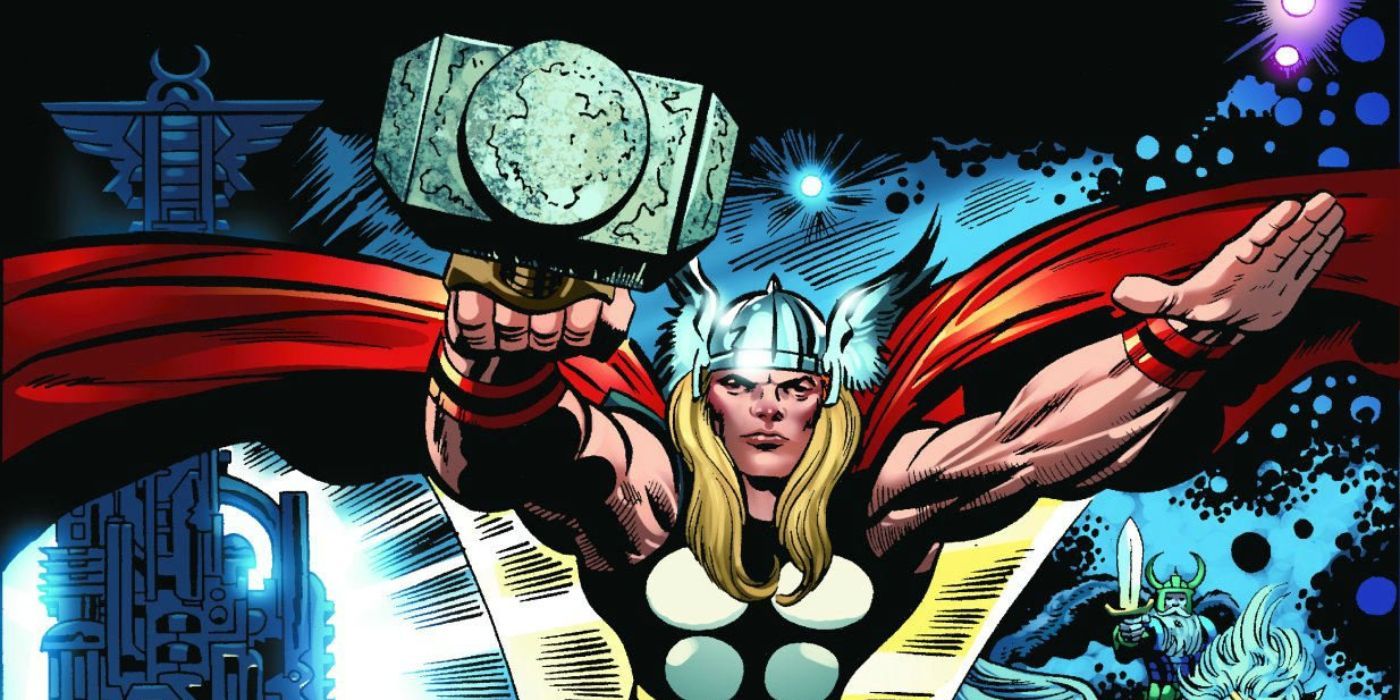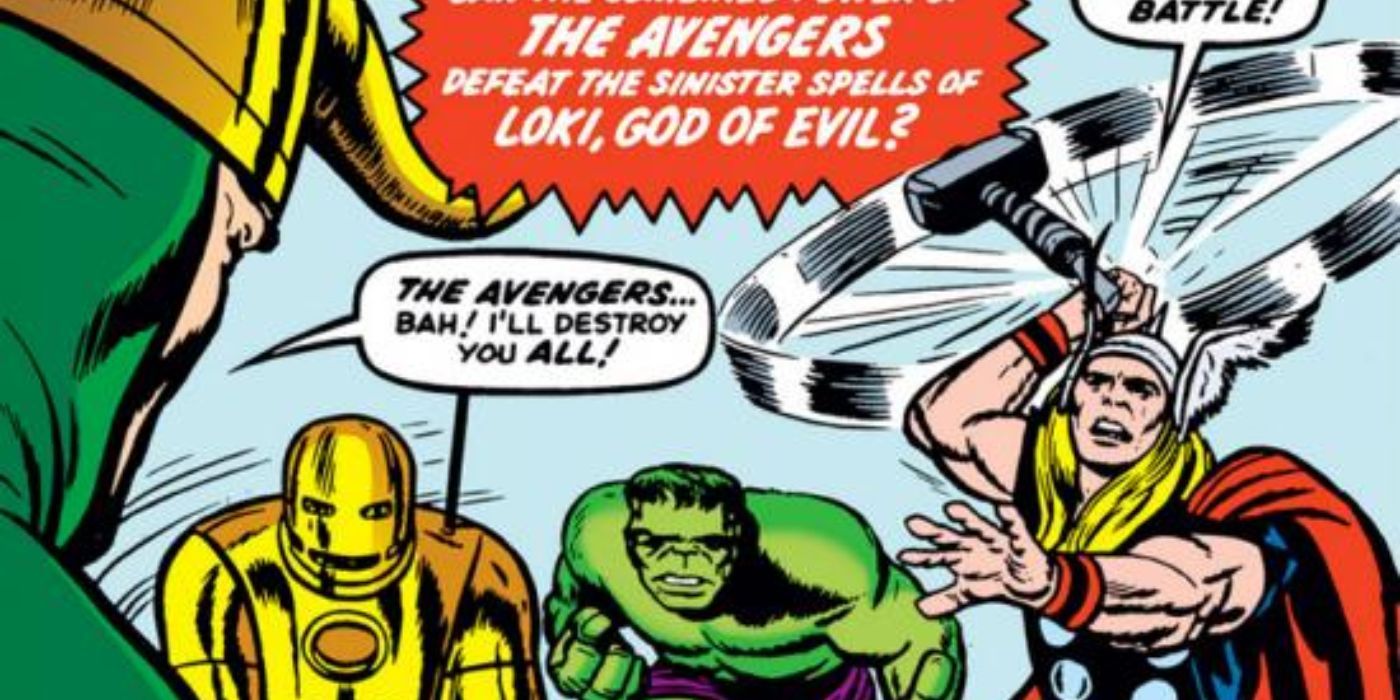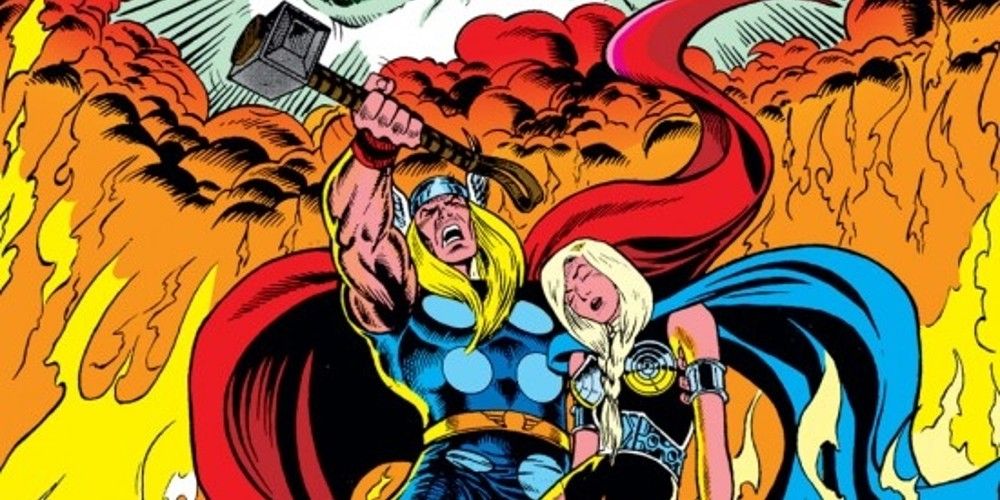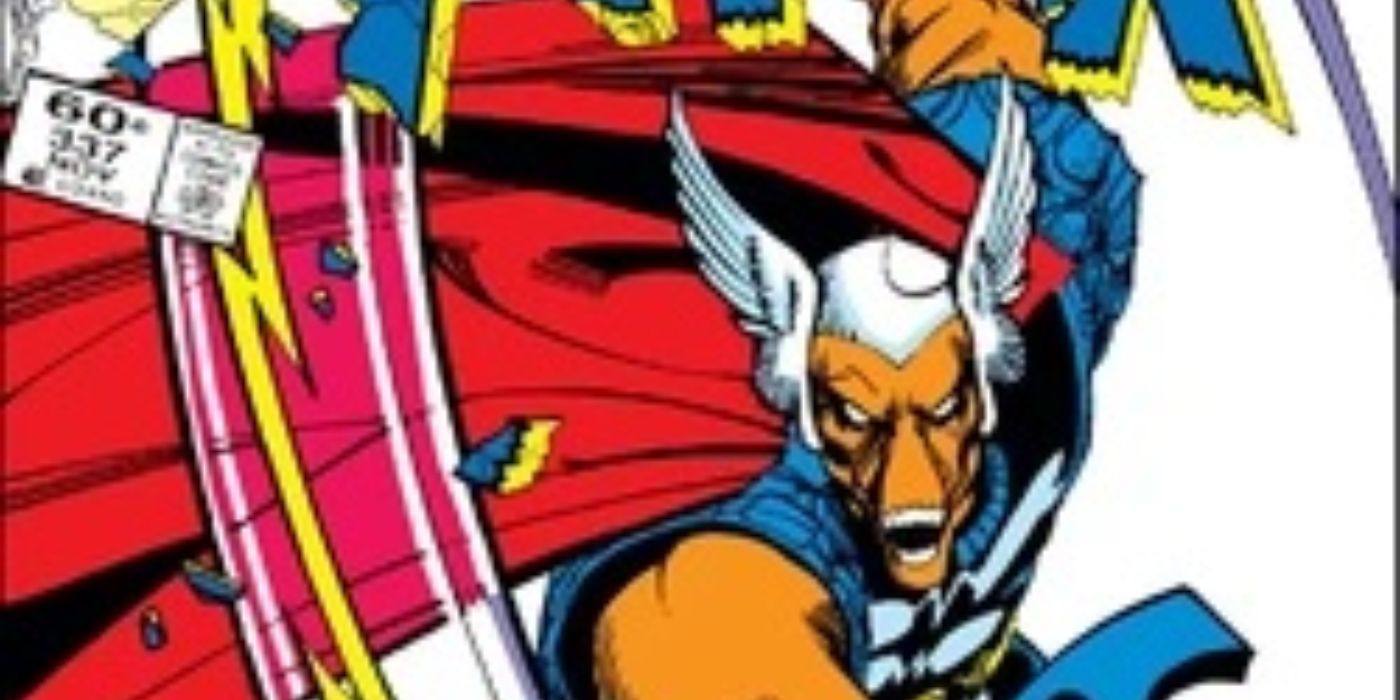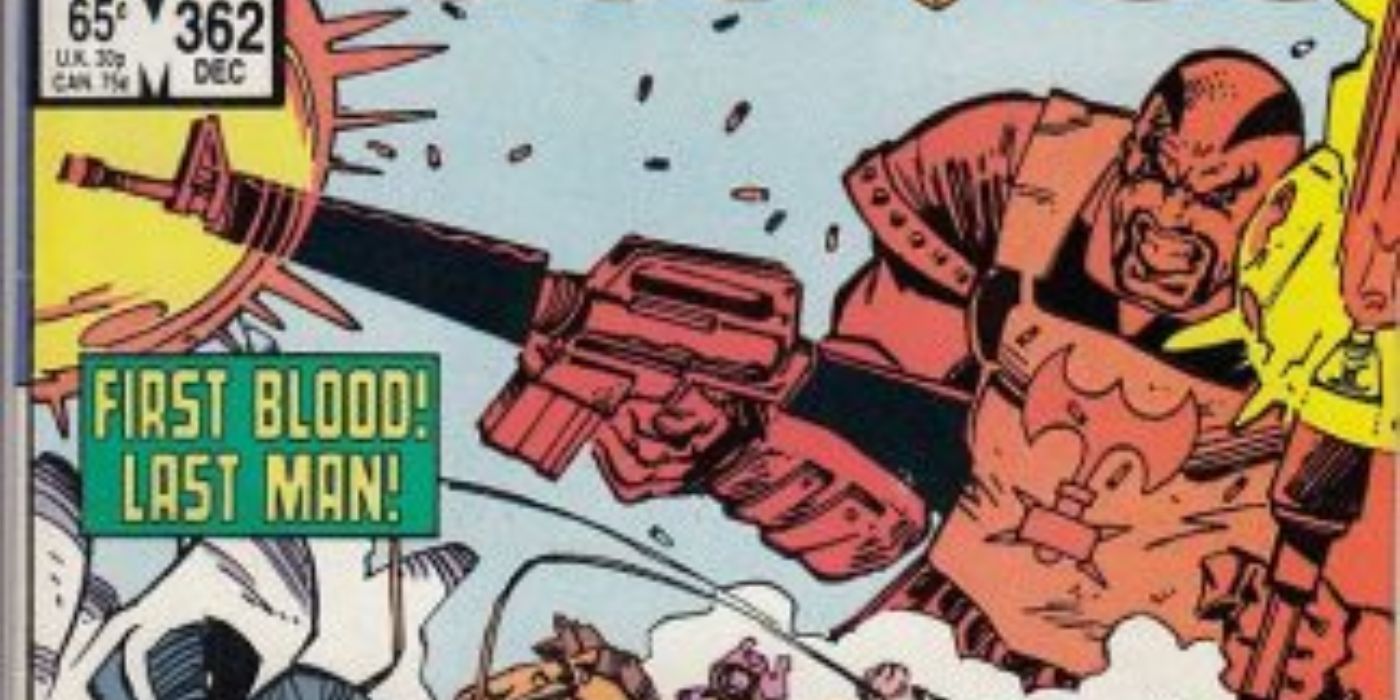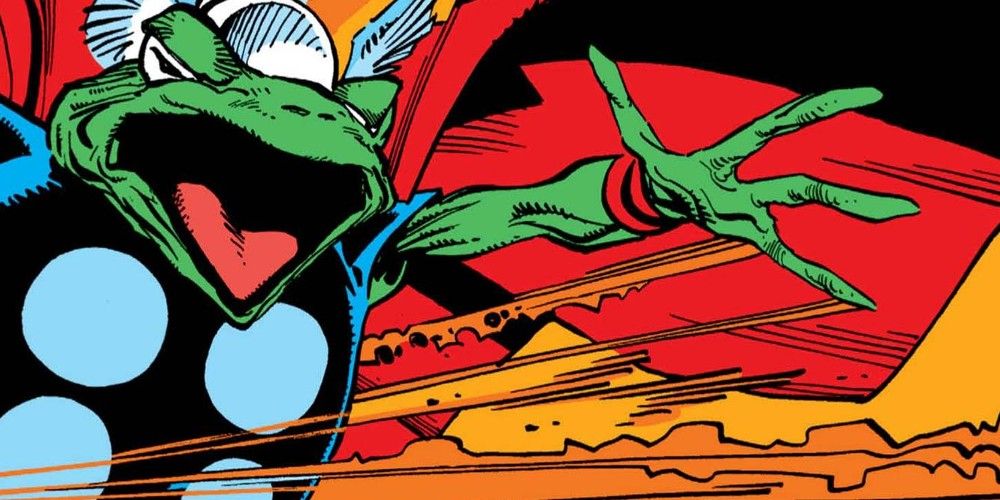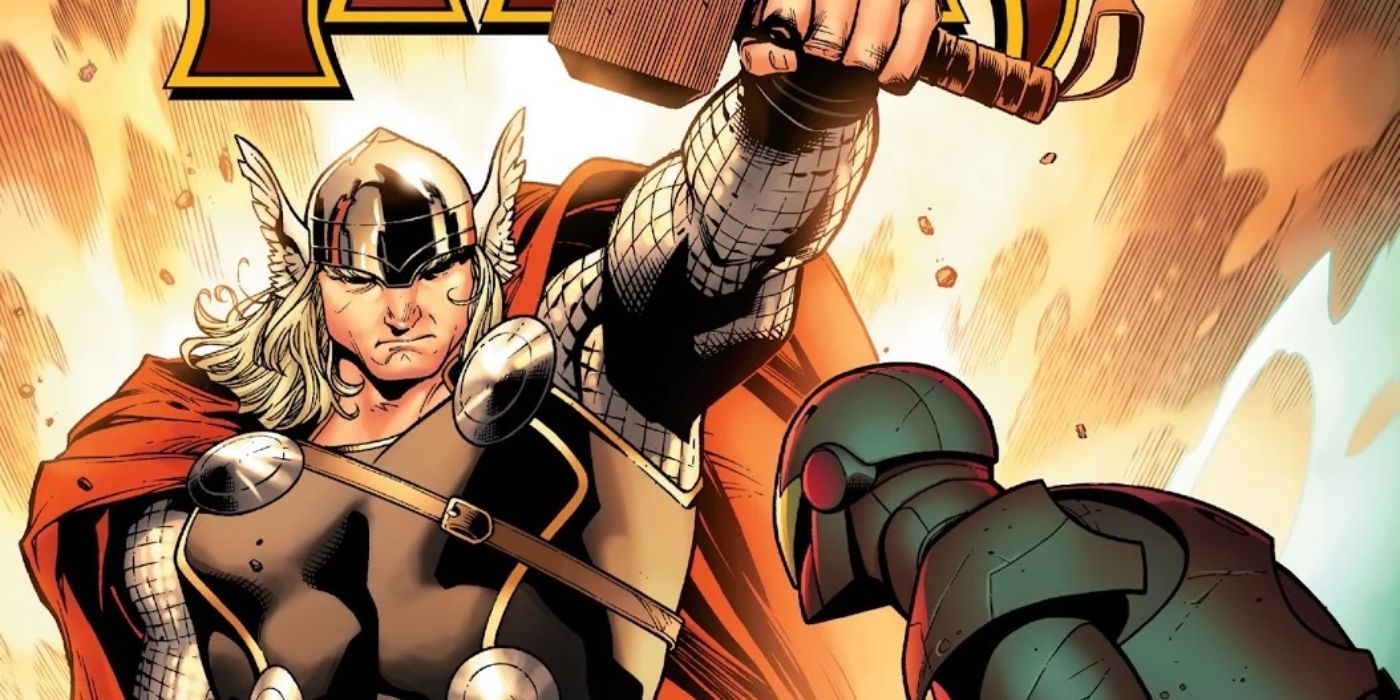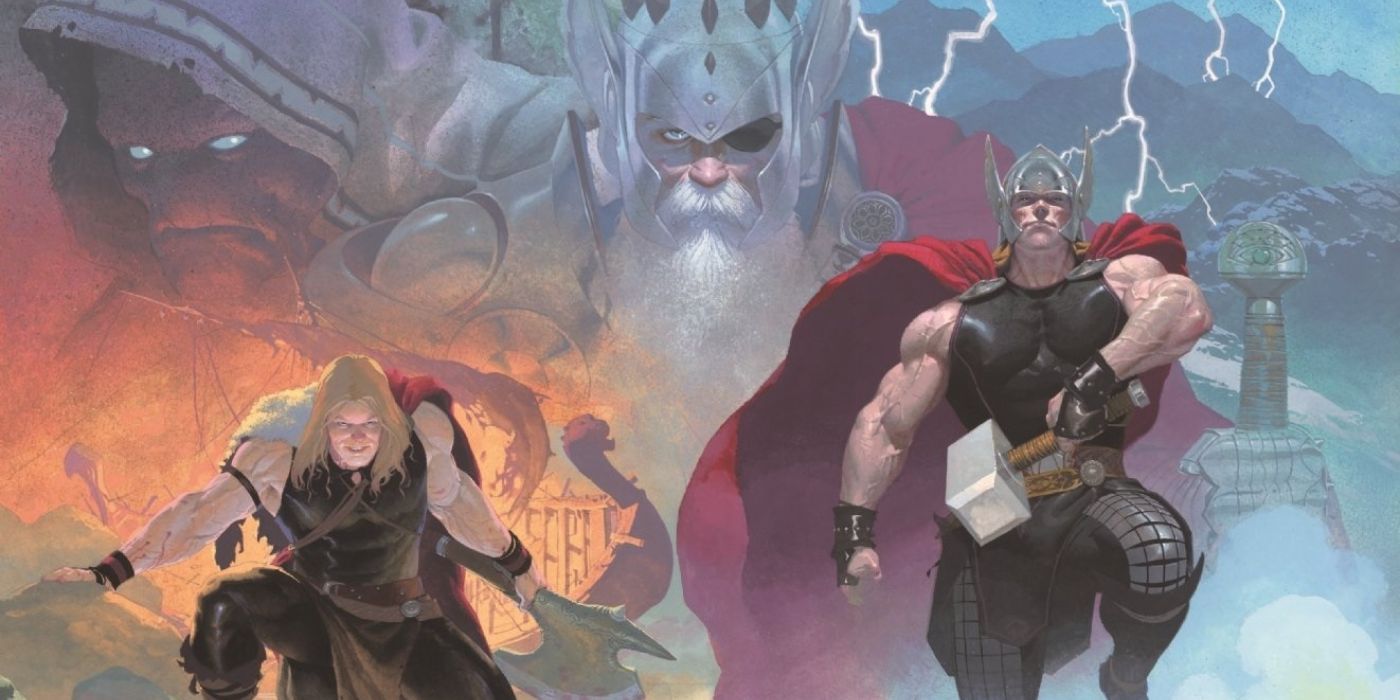Thor has brought adventure to people across Midgard for over a thousand years, whether as a hero of folklore or a character in novels. These days, the character has been the most popular as a Marvel Comics character. Since the early 1960s, Marvel’s version of Thor has brought delight to fans worldwide.
While many fans of the Marvel Cinematic Universe or of classical Norse myth may be hesitant to dive head-first into comic books, there are plenty of excellent Thor stories that honor and reinterpret the character in exciting ways. From epic sagas to kid-friendly adventures, there is a Thor story for everyone.
10 “Journey Into Mystery” #83 Stands The Test Of Time
Thor first appeared in 1962’s Journey Into Mystery #83. While the comic was originally an anthology series, Thor proved so popular that artist Jack Kirby and writers Stan Lee and Larry Lieber quickly turned the title into a Thor-centered book.
The story, titled “The Mighty Thor and the Stone Men from Saturn,” sees Dr. Donald Blake visit rural Norway just in time for it to be attacked by aliens. Blake quickly hides in a nearby cave and, in his frustration, bangs a stick found in the cave on the wall. From there, he turns into the Mighty Thor, beginning the legend of one of comics’ greatest characters.
9 “Tales Of Asgard” Expanded the Realm Eternal
Kirby and Lee would go on to tell plenty of stories with Thor, a character whom they both were passionate about. Kirby in particular took to the God of Thunder, using his knack for drawing otherworldly dimensions to create a fascinatingly beautiful version of Asgard and the rest of the Nine Realms.
In the latter part of the newly Thor-centric Journey Into Mystery, Lee and Kirby created the Tales of Asgard featurette. The Tales explored the fantastical realm of Thor and the adventures of characters like Balder and the Warriors Three. By including stories that would not otherwise have fit into Journey, Kirby and Lee fleshed out a timeless cosmology.
8 “The Avengers” #1 Cemented Thor In The MU
While the worlds of Norse Myth were critical to Thor, Thor himself would become a cornerstone of the Marvel Universe. Following the success of many of their creations, Lee and Kirby sought to tie many of their heroes together. Thus, the Avengers were formed.
The first issue of The Avengers is driven by action on Asgard as Loki causes the Hulk to rampage and draw out his brother. However, Iron Man, the Wasp, and Ant-Man also join the fight, and together, the quintet defeats the God of Mischief and establishes a new heroic tradition.
7 “The Celestials Saga” Features Classic Marvel Creators
After Kirby and Lee left the book, Thor became a title with an ever-shifting creative team, leaving few iconic stories for much of the 1970s. Of this time period, however, classic Marvel writer Roy Thomas’s tenure during the time was a major highlight, particularly in the “Celestials Saga.”
The story, which occurred in Thor #293-301 also features writing by Mark Gruenwald and Ralph Macchio, with art mainly by Keith Pollard. In it, an exiled Thor seeks to prevent the all-powerful Celestials from destroying the world, battling Eternals and the Greek Gods along the way. Though often verbose, the “Celestials Saga” is an epic space opera that helps contextualize the various deities of the MU.
6 “The Ballad of Beta Ray Bill” Began An Epic New Direction For Thor
The Mighty Thor #337 was a crucial issue for the character: it was the beginning of Walt Simonson’s iconic tenure on the book. Simonson brought blocky, heroic pencils and heartfelt, heroic storylines to the title, and this was exemplified in his first story, “The Ballad of Beta Ray Bill.”
An alien species fleeing through the cosmos is protected by one figure: a being named Beta Ray Bill. Sif takes Thor to help, but the Thunder God is mistaken for a demon and Bill bests him in a fight. Surprisingly, Bill is imbued with the power of Thor, heralding an exciting, different era for the character.
5 “Like A Bat Out Of Hel” Is Peak Epic Simonson
Simonson’s run on Thor was marked by epic adventure after epic adventure as the artist used classic myth, the work of Kirby and Lee, and his own powerful imagination to reinvigorate the character. This is best exemplified in Thor #362, “Like a Bat out of Hel!”
Still penciled and written by Simonson, the story sees the continuing quest of Thor, fellow god Balder, Silver Age villain the Executioner, and a group of mystical Vikings as they work to free unjustly trapped souls from the Norse underworld of Hel. Their pursuers are close on their heels, prompting the Executioner to make a last stand on the mythic bridge Gjallerbru. One of the most badass moments in comics, Simonson’s excellence on the title shows perfectly his marriage of the new and the old.
4 “The Frog of Thunder” Is Charmingly Different
Not all of Simonson’s work was breathtakingly epic– sometimes he would lean more on humor and charm. Thor 364-366 saw the Thunder God transformed into a frog by Loki, giving readers a singularly different tale.
As the “Frog of Thunder,” Thor becomes immersed in a conflict between the frogs and rats of Central Park. Alongside ally Puddlegulp, Thor helps the frogs defend themselves. In return, the frogs help Thor return to Asgard where he can exact revenge on his brother to become human again.
3 Thor Volume Three Updated The Character For The Aughts
After Simonson departed the title, Thor saw a variety of superstar creators like Dan Jurgens and Mike Deodato write and draw the continuing adventures of the God of Thunder. However, the next critical piece of Thor’s publication was found in Thor Volume Three, written by J. Michael Straczynski and drawn by Oliver Coipel.
Following the events of Ragnarök, the story integrated Thor into the new, post-Civil War/Disassembled Marvel Universe. Coipel’s pencils created an ethereal new Asgard in Broxton, Oklahoma as Straczynski led Thor on adventures reestablishing his home.
2 “The God Butcher” Is A Perfect Space Fantasy
The next great creative team to take on Thor was Jason Aaron and Esad Ribic, who, in Thor: God of Thunder, brought the character into an awesome era of galactic fantasy. Of particular interest is the “God Butcher/Godbomb” story arc, which introduces Gorr the God Butcher, the villain of the upcoming Thor: Love and Thunder.
In God of Thunder #1-11, Aaron and Ribic weave an exciting, intricate tale of the meaning of divinity in the Marvel Universe. Being a Jason Aaron story, it also features time travel, space sharks, and epic battles, all lushly illustrated by Ribic.
1 Thor Volume Four Gave Readers An All-New Thunder God
Following his success on God of Thunder, Jason Aaron continued his Thor story with Volume Four of the title alongside artist Russell Dauterman. Establishing Jane Foster as the new Thor was a bold move that provided new fans with a perfect jumping-on point.
In the first half of the series, the new Thor confronts evils old and new, ranging from rock trolls to oil corporation Roxxon. She also faces characters like Odin as the larger Marvel Universe comes to terms with a new, female Thor. Featuring beautiful art by Dauterman, Aaron’s tale of legacy and strength is an epic adventure for Thor fans everywhere.
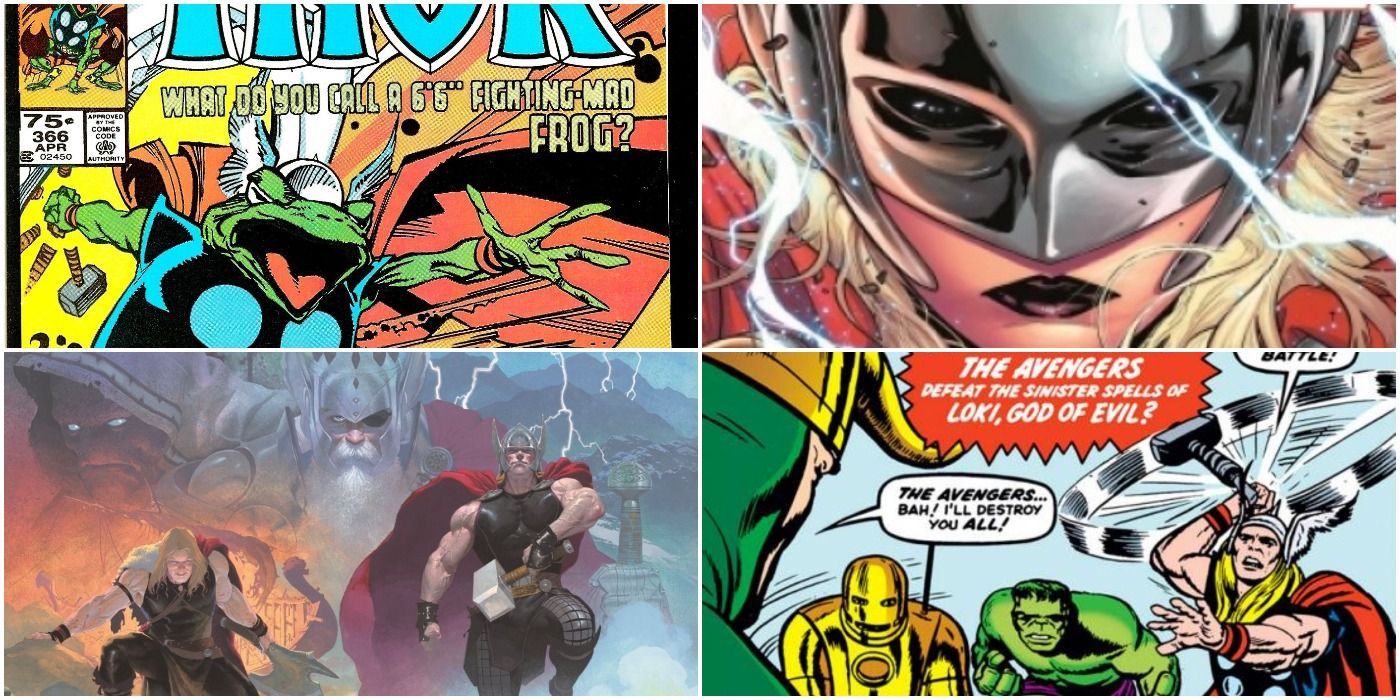

.jpg)
